Inter-stellxr-blog - Lost Among The Stars


More Posts from Inter-stellxr-blog and Others

My other blogs
@aggressively-stripping @mothernaturesbest - The top is a reblog blog and the other is nature

In first grade Jessica Meir made a drawing of herself standing on the moon. Turns out she underestimated her own ambition: Today, at 38, Meir could become the first human to touch down on an even farther destination: Mars. A next step for man? Yes, and a giant leap for womankind.
The mission itself is at least 15 years away—it will take that long to build and test every last piece of equipment. But it’s already the most hotly anticipated space-exploration effort ever. Governments around the world—in China, Europe, and Russia—have plans in the works to at least land robots on Mars, while in the U.S., private companies like SpaceX are partnering with NASA on a human mission and plotting their own commercial trips. And unlike the 1960s race to the moon, this time women are playing pivotal roles—building rockets, designing space suits, and controlling the remote rovers that are already sending momentous insights back from Mars.
A human landing will not, to put it mildly, be easy. The shortest route to our planetary neighbor is 35 million miles. Just getting there will take six to nine months; a round-trip, two to three years. “This will be the longest, farthest, and most ambitious space-exploration mission in history,” says Dava Newman, Ph.D., NASA’s deputy administrator. Once they’ve landed, the astronauts will have to navigate giant dust storms, temperatures that can plummet to minus 284 degrees Fahrenheit in winter, and an atmosphere filled with cancer-causing galactic radiation. If their equipment fails? NASA won’t hear an SOS for 10 minutes. And there’s no turning back. “It’s not like the moon; that’s a three-day trip,” says Jason Crusan, director of advanced exploration systems at the agency. “When you go to Mars, you’re going. You can’t abort.”
And yet the pull is irresistible: The rovers have revealed a land of swooping red dunes and craters. Evidence of water—not just ice, but actual flowing water—has surfaced, and water is often considered a sign of possible life. “Mars can teach us so much about the past, present, and future of our own planet,” says Meir. “That’s a phenomenal thing.”
Also phenomenal? For the first time NASA’s latest class of astronauts is 50 percent female. A fearless group, Meir and her colleagues Anne McClain, 36, Christina Hammock Koch, 37, and Nicole Aunapu Mann, 38, have already flown combat missions in Iraq, braved the South Pole, and dived under thick layers of ice in Antarctica. Last fall they gave Glamour exclusive access to watch them train at NASA’s facilities in Houston—and talked about their epic adventure.
Continue Reading.





Here’s to all my boys with love handles, stretch marks, ribs that show, who feel they are too big or too small, who feel “unmanly,” who have cellulite, who can’t grow facial hair, who can’t seem to gain weight or lose it, who feel “too short” or wish they looked like a male model. Y'all matter. Love you. 💕
NASA’s Fleet of Planet-hunters and World-explorers
Around every star is at least one planet, so we’re bound to find one that is rocky, like Earth, and possibly suitable for life. While we’re not quite to the point where we can zoom up and take clear snapshots of the thousands of distant worlds we’ve found outside our solar system, there are ways we can figure out what exoplanets light years away are made of, and if they have signs of basic building blocks for life. Here are a few current and upcoming missions helping us explore new worlds:
Kepler

Launched in 2009, the Kepler space telescope searched for planets by looking for telltale dips in a star’s brightness caused by crossing, or transiting, planets. It has confirmed more than 1,000 planets; of these, fewer than 20 are Earth-size (therefore possibly rocky) and in the habitable zone – the area around a star where liquid water could pool on the surface of an orbiting planet. Astronomers using Kepler data found the first Earth-sized planet orbiting in the habitable zone of its star.
In May 2013, a second pointing wheel on the spacecraft broke, making it not stable enough to continue its original mission. But clever engineers and scientists got to work, and in May 2014, Kepler took on a new job as the K2 mission. K2 continues the search for other worlds but has introduced new opportunities to observe star clusters, young and old stars, active galaxies and supernovae.
Transiting Exoplanet Survey Satellite (TESS)

Revving up for launch around 2017-2018, NASA’s Transiting Exoplanet Survey Satellite (TESS) will find new planets the same way Kepler does, but right in the stellar backyard of our solar system while covering 400 times the sky area. It plans to monitor 200,000 bright, nearby stars for planets, with a focus on finding Earth and Super-Earth-sized planets.
Once we’ve narrowed down the best targets for follow-up, astronomers can figure out what these planets are made of, and what’s in the atmosphere. One of the ways to look into the atmosphere is through spectroscopy.
As a planet passes between us and its star, a small amount of starlight is absorbed by the gas in the planet’s atmosphere. This leaves telltale chemical “fingerprints” in the star’s light that astronomers can use to discover the chemical composition of the atmosphere, such as methane, carbon dioxide, or water vapor.
James Webb Space Telescope

Launching in 2018, NASA’s most powerful telescope to date, the James Webb Space Telescope (JWST), will not only be able to search for planets orbiting distant stars, its near-infrared multi-object spectrograph will split infrared light into its different colors- spectrum- providing scientists with information about an physical properties about an exoplanet’s atmosphere, including temperature, mass, and chemical composition.
Hubble Space Telescope

Hubble Space Telescope is better than ever after 25 years of science, and has found evidence for atmospheres bleeding off exoplanets very close to their stars, and even provided thermal maps of exoplanet atmospheres. Hubble holds the record for finding the farthest exoplanets discovered to date, located 26,000 light-years away in the hub of our Milky Way galaxy.
Chandra X-ray Observatory

Chandra X-ray Observatory can detect exoplanets passing in front of their parent stars. X-ray observations can also help give clues on an exoplanet’s atmosphere and magnetic fields. It has observed an exoplanet that made its star act much older than it actually is.
Spitzer Space Telescope

Spitzer Space Telescope has been unveiling hidden cosmic objects with its dust-piercing infrared vision for more than 12 years. It helped pioneer the study of atmospheres and weather on large, gaseous exoplanets. Spitzer can help narrow down the sizes of exoplanets, and recently confirmed the closest known rocky planet to Earth.
SOFIA

The Stratospheric Observatory for Infrared Astronomy (SOFIA) is an airplane mounted with an infrared telescope that can fly above more than 99 percent of Earth’s atmospheric water vapor. Unlike most space observatories, SOFIA can be routinely upgraded and repaired. It can look at planetary-forming systems and has recently observed its first exoplanet transit.
What’s Coming Next?
Analyzing the chemical makeup of Earth-sized, rocky planets with thin atmospheres is a big challenge, since smaller planets are incredibly faint compared to their stars. One solution is to block the light of the planets’ glaring stars so that we can directly see the reflected light of the planets. Telescope instruments called coronagraphs use masks to block the starlight while letting the planet’s light pass through. Another possible tool is a large, flower-shaped structure known as the starshade. This structure would fly in tandem with a space telescope to block the light of a star before it enters the telescope.
All images (except SOFIA) are artist illustrations.
Make sure to follow us on Tumblr for your regular dose of space: http://nasa.tumblr.com

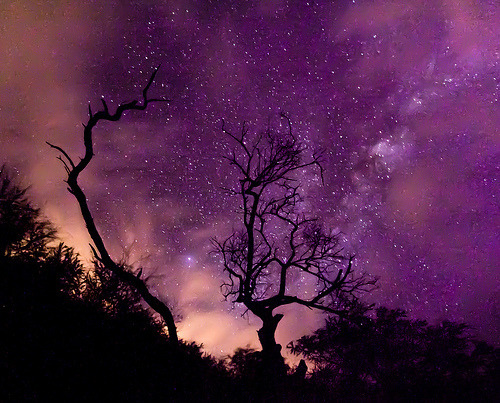
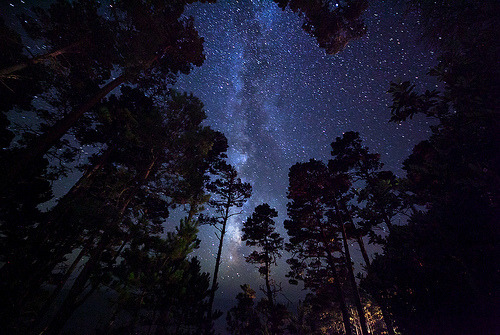


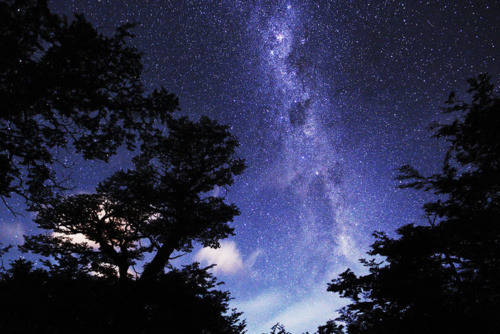
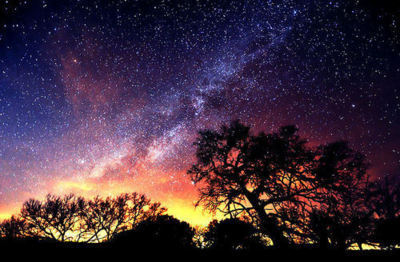
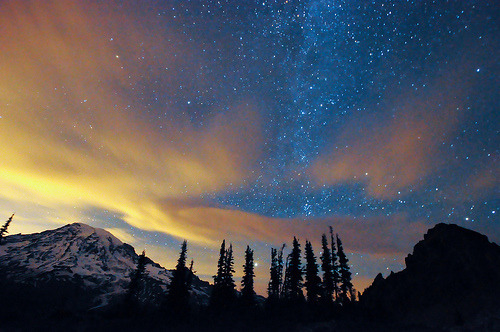


New Horizons captures images of water ice and blue skies on Pluto
New Horizons, the spacecraft that keeps on giving.


That feel when you’re so drained of creativity that you have to ask your friend to just pick a number from 1-44. Yeah this hasn’t been my greatest week in terms of art so I’m very this isn’t that great. ANYWAYS Teddy Roosevelt is the literal embodiment the shark from the body building ad from that one spongebob episode (I overdosed my add meds today so I’d like to apologize ahead of time). But yeah, sick of being the scrawny asthmatic kid he was, Teedy (he was actually called that) wanted to buff up and oh my god did he freaking accomplish that. He turned out to be basically invincible stopping a bullet with his chest at one point while being charismatic as fuck, but he would basically just disappear into the void whenever someone would say a dick joke. Also, apparently he didn’t swear on the bible when taking office when McKinley was assassinated so that’s why he’s saying oh my god.
@wingmanoftheuniverse: thank





-
 takingback-thepenguin reblogged this · 2 weeks ago
takingback-thepenguin reblogged this · 2 weeks ago -
 tunsun44 liked this · 2 weeks ago
tunsun44 liked this · 2 weeks ago -
 shepherdzcane liked this · 2 weeks ago
shepherdzcane liked this · 2 weeks ago -
 dmitris-notebook liked this · 2 weeks ago
dmitris-notebook liked this · 2 weeks ago -
 the-weird-kids-next-door liked this · 2 weeks ago
the-weird-kids-next-door liked this · 2 weeks ago -
 frankensteinboy liked this · 2 weeks ago
frankensteinboy liked this · 2 weeks ago -
 slushiebonez liked this · 2 weeks ago
slushiebonez liked this · 2 weeks ago -
 tychos-huzband reblogged this · 2 weeks ago
tychos-huzband reblogged this · 2 weeks ago -
 widdershyn-panda reblogged this · 2 weeks ago
widdershyn-panda reblogged this · 2 weeks ago -
 crabhermit liked this · 2 weeks ago
crabhermit liked this · 2 weeks ago -
 ashthehybrid liked this · 2 weeks ago
ashthehybrid liked this · 2 weeks ago -
 blackincat reblogged this · 2 weeks ago
blackincat reblogged this · 2 weeks ago -
 blackincat liked this · 2 weeks ago
blackincat liked this · 2 weeks ago -
 phoenixiguess liked this · 2 weeks ago
phoenixiguess liked this · 2 weeks ago -
 memes-not-on-main reblogged this · 2 weeks ago
memes-not-on-main reblogged this · 2 weeks ago -
 englivesandzero-sloane liked this · 2 weeks ago
englivesandzero-sloane liked this · 2 weeks ago -
 loudkidsoulfreak reblogged this · 2 weeks ago
loudkidsoulfreak reblogged this · 2 weeks ago -
 loudkidsoulfreak liked this · 2 weeks ago
loudkidsoulfreak liked this · 2 weeks ago -
 earlykatgetsthesparrow liked this · 2 weeks ago
earlykatgetsthesparrow liked this · 2 weeks ago -
 dykeyaoi liked this · 2 weeks ago
dykeyaoi liked this · 2 weeks ago -
 androdragynous liked this · 2 weeks ago
androdragynous liked this · 2 weeks ago -
 centi-pearl liked this · 2 weeks ago
centi-pearl liked this · 2 weeks ago -
 iwontbeforgotten liked this · 2 weeks ago
iwontbeforgotten liked this · 2 weeks ago -
 billymayslesbian reblogged this · 2 weeks ago
billymayslesbian reblogged this · 2 weeks ago -
 randomchaotix liked this · 2 weeks ago
randomchaotix liked this · 2 weeks ago -
 calico-kiwi reblogged this · 2 weeks ago
calico-kiwi reblogged this · 2 weeks ago -
 calico-kiwi liked this · 2 weeks ago
calico-kiwi liked this · 2 weeks ago -
 purpleheartvee liked this · 2 weeks ago
purpleheartvee liked this · 2 weeks ago -
 xtrasilliez liked this · 2 weeks ago
xtrasilliez liked this · 2 weeks ago -
 twofs liked this · 2 weeks ago
twofs liked this · 2 weeks ago -
 faedemon reblogged this · 2 weeks ago
faedemon reblogged this · 2 weeks ago -
 aimervee liked this · 2 weeks ago
aimervee liked this · 2 weeks ago -
 pandedios-carli liked this · 2 weeks ago
pandedios-carli liked this · 2 weeks ago -
 sylver-t4b2222 reblogged this · 2 weeks ago
sylver-t4b2222 reblogged this · 2 weeks ago -
 bayemon liked this · 2 weeks ago
bayemon liked this · 2 weeks ago -
 razzleberryjam reblogged this · 2 weeks ago
razzleberryjam reblogged this · 2 weeks ago -
 razzleberryjam liked this · 2 weeks ago
razzleberryjam liked this · 2 weeks ago -
 meowtalhead reblogged this · 2 weeks ago
meowtalhead reblogged this · 2 weeks ago -
 meowtalhead liked this · 2 weeks ago
meowtalhead liked this · 2 weeks ago -
 riverc1an reblogged this · 2 weeks ago
riverc1an reblogged this · 2 weeks ago -
 pastelkitty0133 liked this · 2 weeks ago
pastelkitty0133 liked this · 2 weeks ago -
 username-that-really-isnt-taken reblogged this · 3 weeks ago
username-that-really-isnt-taken reblogged this · 3 weeks ago -
 ashleywanttobe liked this · 2 months ago
ashleywanttobe liked this · 2 months ago -
 superbpuppylove reblogged this · 2 months ago
superbpuppylove reblogged this · 2 months ago -
 superbpuppylove liked this · 2 months ago
superbpuppylove liked this · 2 months ago -
 ginger-old-wyrm reblogged this · 3 months ago
ginger-old-wyrm reblogged this · 3 months ago -
 ginger-old-wyrm liked this · 3 months ago
ginger-old-wyrm liked this · 3 months ago -
 arcanescholxr liked this · 3 months ago
arcanescholxr liked this · 3 months ago
"I don't know who will read this. I guess someone will find it eventually. Maybe in a hundred years or so." -Mark Watney
174 posts